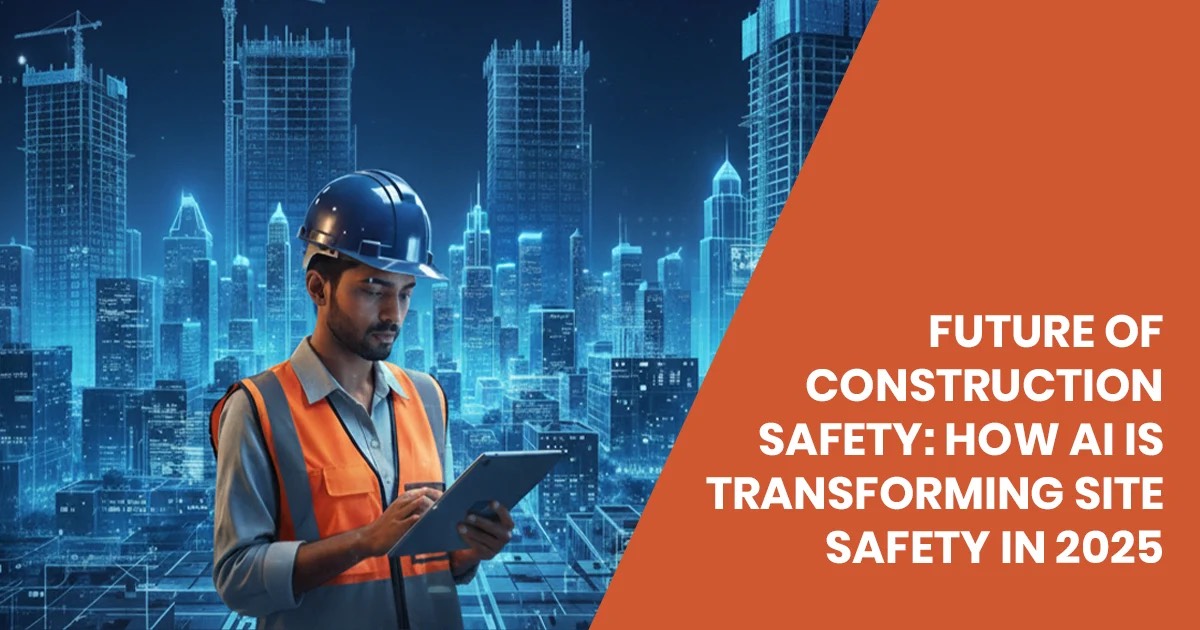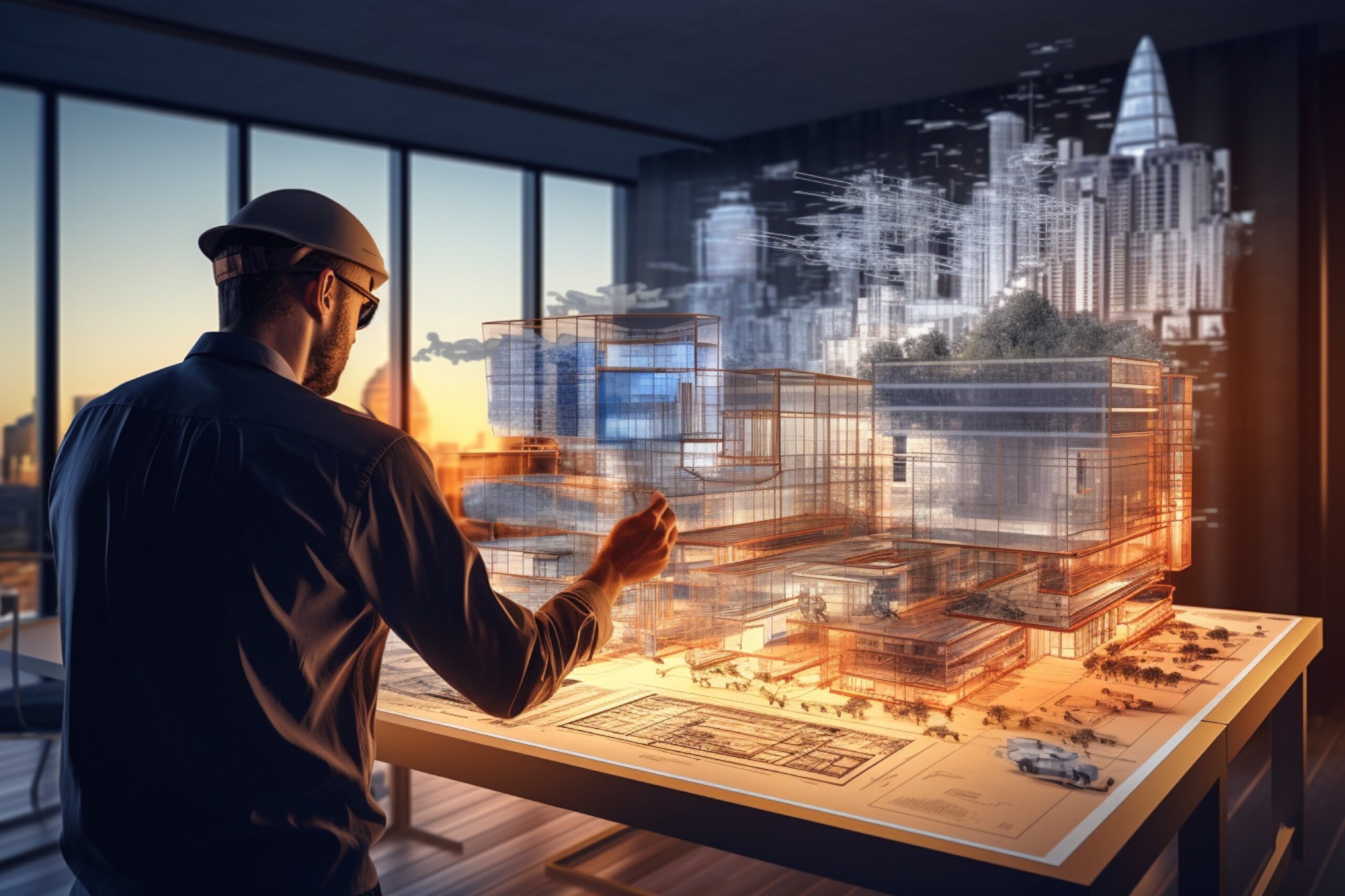Future of Construction Safety: How AI is Transforming Site Safety in 2025
While the construction industry debates whether AI adoption is too slow, about 43% of U.S. construction firms now use some form of AI [1].
We have seen identical trends in other regions, such as Europe and the Middle East. That’s real momentum, not PR hype. We’ve seen safety standards climb steadily, powered by better PPE, digitised logs, and more innovative compliance systems. Accidents still happen, but every step forward is contributing to reducing the number.
In 2025, AI is accelerating. We at Navatech don’t see AI as a replacement for what’s already working. Instead, it extends human insight and speeds up what we’ve all been building toward.
“Most successful technological transformations are always 80% about people and 20% about technology” – Prakash Senghani.
Why AI Matters for Site Safety in 2025
Over the last decade, we’ve upgraded how we keep people safe. Hard hats got smarter, logs went digital, and compliance systems became more intuitive.
They were foundational improvements that set the stage for what’s happening now.
AI represents the next natural evolution. Drivers are clear:
1. Global ambitions for zero-incident sites.
2. Increasing focus on the health & safety of frontline workers.
3. Need for smarter & faster compliance.
AI isn’t an add-on. It’s the natural next gear, as essential as helmets.
Fundamentals of Human-AI Partnership that will redefine on-site safety
Augmented Decision-Making, Not Automated Replacement
AI helps safety managers focus. It is not intended to replace their judgment. It is expected to make them more accurate. AI will enable managers to have real-time insights that sharpen their decisions.
Shifting From Reactive to Proactive
Traditional safety management has been excellent at responding to incidents. AI makes it possible to prevent them. Pattern recognition in near-miss events reveals trends that might take months to become visible through manual analysis.
At Navatech, we have discovered that the best safety predictions come from combining site-specific learning with cross-project intelligence. Worker involvement in predictive model improvement makes the difference between systems that feel imposed and systems that feel helpful.
Making AI Feel Intuitive
The most successful AI safety implementations don’t feel like technology deployments. They feel like natural extensions of existing workflows.
Workers shouldn’t think, “here comes tech.” They should just use it. Naturally & intuitively.
How AI is Transforming Site Safety
Breaking Language and Accessibility Barriers
One of the most overlooked safety challenges is communication. Critical safety information often gets lost in translation (quite literally). Frontline teams often skip safety info because it’s too formal, too lengthy, or not in their language.
Solutions like nAI Hub change that. It delivers safety info via any messaging app like WhatsApp, Teams, WeChat, wherever workers already are. It even understands voice notes and images, in any language. Communication becomes instant and inclusive.
It’s a safety breakthrough. Workers who might skip traditional training materials because of language barriers or literacy challenges now have access to information that could save their lives. The technology adapts to them rather than forcing them to adapt to it.
Predictive Safety Insights
AI learns from past near-misses and incidents to anticipate future risks with remarkable accuracy. The real breakthrough is making predictions actionable at the site level.
Instead of generating generic warnings, AI systems provide specific, contextual recommendations. They might suggest adjusting work schedules based on predicted fatigue levels, recommend additional PPE for specific tasks during certain weather conditions, or flag equipment that’s approaching maintenance windows during high-risk operations.
The key is relevance. Workers trust alerts that prove accurate and useful. They bypass systems that are just to police them or provide generic safety reminders.
Streamlined Incident Resolution
Communication chaos often compounds safety incidents. When something goes wrong, coordinating response efforts across multiple teams and stakeholders can delay critical actions. AI-powered products like nAI Flow integrate within group chats in communication apps that workers use daily.
The system analyses communications happening in groups to automatically assign tasks to responsible stakeholders for resolution, management, and approval. When a safety issue gets reported in a WhatsApp group, AI can immediately route it to the right safety manager, create tracking documentation, and monitor resolution progress.
Technology must blend into daily workflows seamlessly to create alerts that workers trust rather than systems they bypass.
This approach eliminates the friction that often prevents proper incident reporting and follow-up.
Smart Safety Logs & Reporting
Administrative burden kills safety momentum. When safety managers spend hours manually compiling reports, they have less time for actual safety activities.
AI reduces this burden by automatically generating reports that tell the true story of site safety rather than just ticking compliance boxes.
Reports become tools. They highlight trends, predict emerging risks, and provide actionable insights for continuous improvement. Safety managers can focus on analysis and action rather than data entry and formatting.
Where does safety fit in business strategy?
Safety is being seen as a competitive advantage these days that drives profitability, efficiency, and reputation. AI makes this strategic approach measurable and scalable.
The benefits extend far beyond avoiding accidents. Fewer incidents mean less downtime and fewer disruptions to schedules. Improved safety records lead to better preferred contractor status with major global clients. Teams working on safer sites report higher morale and lower turnover rates as well.
According to industry research, construction companies implementing AI safety systems report an average ROI of 340% within 18 months [2], with accident reduction rates between 45-70%. But the indirect benefits often exceed direct cost savings. Projects run smoothly when safety risks are anticipated and prevented rather than managed after incidents occur.
Building a Safer Tomorrow
AI is not replacing the safety practices that work already. It’s here to enhance them with intelligence that makes good safety programs great and great programs exceptional.
Progress happens one project at a time, one worker at a time, one prevented incident at a time. AI gives us tools to accelerate that progress while maintaining the focus on humans that makes construction safety personal and not procedural.
There are numerous reports suggesting a huge increase in the market size of construction tech and AI over the next few years. However, the real issue is ensuring the workers go home safely every day. That’s the future we’re building at Navatech, partnering with our clients.
If you’re curious about where our products (nAI Hub& nAI Flow) can provide immediate value without disrupting existing workflows for your construction sites, get in touch with us.

